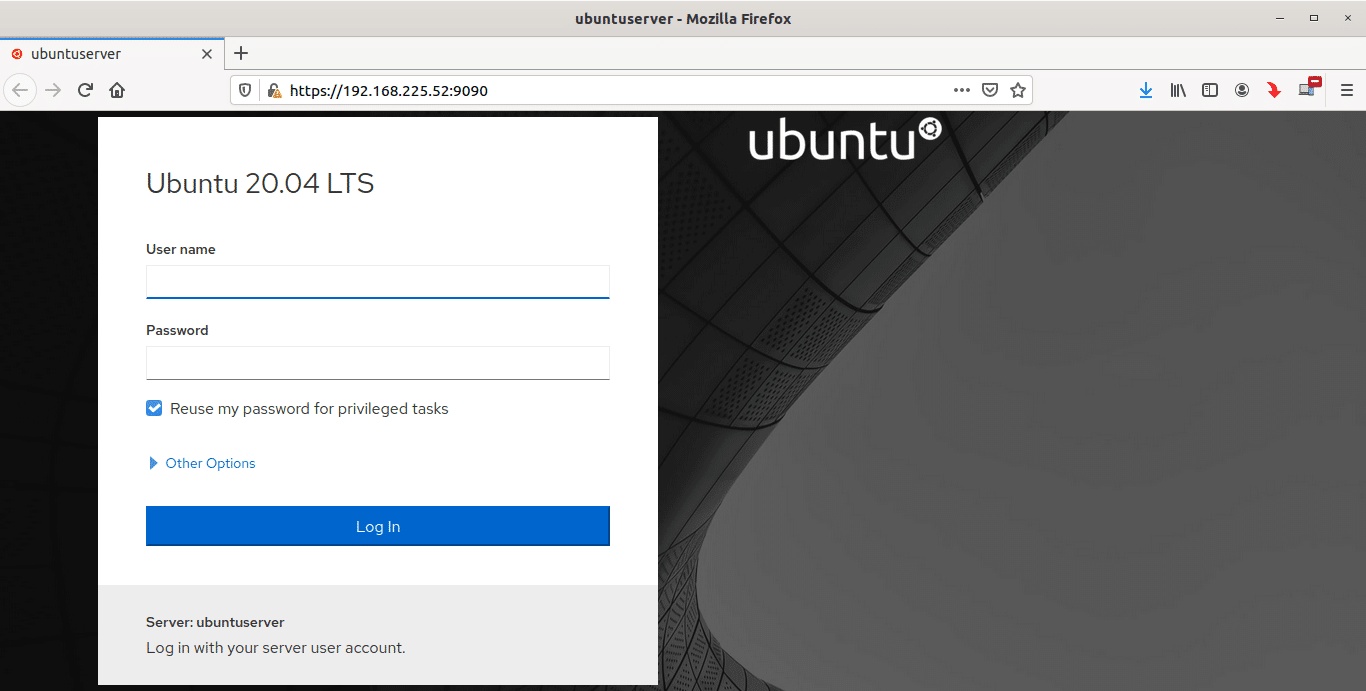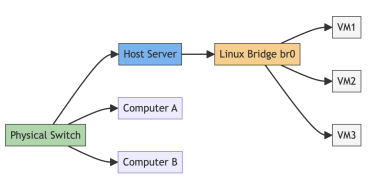8 min to read
Resolving VM-to-VM Network Communication Issues in Cockpit
How to overcome macvtap limitations and establish stable VM networking for Kubernetes clusters

Overview
When managing virtual machines (VMs) using Cockpit, network communication issues between VMs are commonly encountered. Particularly when VMs are configured in “Direct” network mode, external communication works fine, but VM-to-VM internal communication often fails.
This article shares the step-by-step process of resolving actual networking problems encountered in production, including network design methods for Kubernetes cluster configuration.
Problem Situation
Symptoms:
- VMs connected to the same physical NIC via macvtap
- VM-to-VM ping communication failure (100% packet loss)
- External communication working normally
- Expected Pod communication issues when setting up Kubernetes cluster
Environment Information:
- Physical Server: Ubuntu 22.04 LTS
- Virtualization: KVM/QEMU with libvirt
- Management Tool: Cockpit Web Console
- Goal: Kubernetes cluster configuration
Method 1: Diagnosing the Problem - macvtap Fundamental Constraints
Current Network Configuration Check
First, I verified the network status of the physical server and VMs.
# Physical server (ubuntu)
root@ubuntu:~# ip a
3: eno1: <BROADCAST,MULTICAST,UP,LOWER_UP> mtu 1500 qdisc mq state UP group default qlen 1000
link/ether 90:5a:08:74:aa:21 brd ff:ff:ff:ff:ff:ff
inet 10.10.10.15/24 brd 10.10.10.255 scope global eno1
8: macvtap0@eno1: <BROADCAST,MULTICAST,UP,LOWER_UP> mtu 1500 qdisc noqueue state UP default qlen 500
16: macvtap3@eno1: <BROADCAST,MULTICAST,UP,LOWER_UP> mtu 1500 qdisc noqueue state UP default qlen 500
# VM1 (k8s-control-01)
root@k8s-control-01:~# ip a
3: enp7s0: <BROADCAST,MULTICAST,UP,LOWER_UP> mtu 1500 qdisc fq_codel state UP group default qlen 1000
inet 10.10.10.17/24 brd 10.10.10.255 scope global enp7s0
# VM2 (k8s-compute-01)
root@k8s-compute-01:~# ip a
3: enp7s0: <BROADCAST,MULTICAST,UP,LOWER_UP> mtu 1500 qdisc fq_codel state UP group default qlen 1000
inet 10.10.10.18/24 brd 10.10.10.255 scope global enp7s0
Communication Test Results
# VM-to-VM direct communication (Failed)
root@k8s-compute-01:~# ping 10.10.10.17
PING 10.10.10.17 (10.10.10.17) 56(84) bytes of data.
^C
--- 10.10.10.17 ping statistics ---
1 packets transmitted, 0 received, 100% packet loss, time 0ms
# External communication (Success)
root@k8s-compute-01:~# ping 8.8.8.8
PING 8.8.8.8 (8.8.8.8) 56(84) bytes of data.
64 bytes from 8.8.8.8: icmp_seq=1 ttl=116 time=8.42 ms
Understanding macvtap Constraints
macvtap Basic Operation Principles:
- Direct communication between macvtap interfaces connected to the same physical NIC is blocked
- Designed for VM isolation for security reasons
- Normal communication with external networks is possible
This was the core cause of our problem.
Method 2: Hardware-Based Solution Review
Additional NIC Utilization Approach
I attempted to activate the second network interface (eno2) and distribute VMs across different NICs.
# netplan configuration
network:
ethernets:
eno1:
dhcp4: no
addresses: [10.10.10.15/24]
nameservers:
addresses: [8.8.8.8]
routes:
- to: default
via: 10.10.10.1
metric: 100
eno2:
dhcp4: no
addresses: [10.10.10.23/24]
nameservers:
addresses: [8.8.8.8]
routes:
- to: default
via: 10.10.10.1
metric: 200
# Apply and verify results
sudo netplan apply
# Check results
root@ubuntu:~# ip a
2: eno2: <BROADCAST,MULTICAST,UP,LOWER_UP> mtu 1500 qdisc mq state UP group default qlen 1000
inet 10.10.10.23/24 brd 10.10.10.255 scope global eno2
3: eno1: <BROADCAST,MULTICAST,UP,LOWER_UP> mtu 1500 qdisc mq state UP group default qlen 1000
inet 10.10.10.15/24 brd 10.10.10.255 scope global eno1
Planned VM Distribution:
- VM1: macvtap@eno1 (10.10.10.17)
- VM2: macvtap@eno2 (10.10.10.18)
However, this method is only valid for up to 2 VMs.
Network Driver Analysis
To find the root cause of the problem, I conducted comparative analysis with different environments.
# Environment with good communication (cockpit machine)
root@cockpit:~# sudo ethtool -i enp4s0
driver: igc
version: 6.8.0-57-generic
firmware-version: 1057:8754
# Problematic environment (ubuntu machine)
root@ubuntu:~# sudo ethtool -i eno1
driver: igb
version: 5.15.0-144-generic
firmware-version: 3.30, 0x8000079c
root@ubuntu:~# sudo ethtool -i eno2
driver: atlantic
version: 5.15.0-144-generic
firmware-version: 1.3.30
Discovered Differences:
- igc driver (latest): Supports macvtap hairpin mode enabling VM-to-VM communication
- igb/atlantic drivers (older): Hairpin mode limitations preventing VM-to-VM communication
- Kernel version: 6.8.0 vs 5.15.0 difference
Method 3: Fundamental Solution with Bridge Network Configuration
netplan Bridge Setup
To circumvent hardware constraints with software, I configured a bridge network.
# This is the network config written by 'subiquity'
network:
ethernets:
eno1:
dhcp4: no
eno2:
dhcp4: no
bridges:
br0:
interfaces: [eno1, eno2]
addresses: [10.10.10.15/24]
routes:
- to: default
via: 10.10.10.1
nameservers:
addresses: [8.8.8.8]
# Apply configuration
sudo netplan apply
# Check bridge status
brctl show
bridge name bridge id STP enabled interfaces
br0 8000.905a0874aa21 no eno1
eno2
Creating libvirt Bridge Network
Method 1: Define network with XML file**
# Create bridge network definition file
cat > /tmp/br0-network.xml << EOF
<network>
<name>br0-network</name>
<forward mode='bridge'/>
<bridge name='br0'/>
</network>
EOF
# Create and start network
sudo virsh net-define /tmp/br0-network.xml
sudo virsh net-start br0-network
sudo virsh net-autostart br0-network
# Verify
sudo virsh net-list --all
Name State Autostart Persistent
----------------------------------------------
br0-network active yes yes
default active yes yes
Changing VM Network in Cockpit
- Virtualization → Networks: Verify new “br0-network”
- Change each VM’s network setting: “Direct” → “br0-network”
- Restart VMs
Alternative: Using “Bridge to LAN” option**
- Cockpit → Create Network → Forward mode: “Bridge to LAN”
- Bridge: Select “br0”
Method 4: Verification and Testing
VM-to-VM Communication Verification
# Ping from VM1 to VM2
root@k8s-control-01:~# ping 10.10.10.18
PING 10.10.10.18 (10.10.10.18) 56(84) bytes of data.
64 bytes from 10.10.10.18: icmp_seq=1 ttl=64 time=0.231 ms
64 bytes from 10.10.10.18: icmp_seq=2 ttl=64 time=0.187 ms
# Ping from VM2 to VM1
root@k8s-compute-01:~# ping 10.10.10.17
PING 10.10.10.17 (10.10.10.17) 56(84) bytes of data.
64 bytes from 10.10.10.17: icmp_seq=1 ttl=64 time=0.156 ms
64 bytes from 10.10.10.17: icmp_seq=2 ttl=64 time=0.201 ms
Network Performance Measurement
# Bandwidth testing using iperf3
# Run server on VM1
iperf3 -s
# Run client on VM2
iperf3 -c 10.10.10.17 -t 30
Troubleshooting Tips
1. Network Disconnection After Bridge Creation
# Solution: Move IP from physical interfaces to bridge in netplan configuration
# Remove IP from eno1, eno2 and configure only on br0
2. DNS Resolution Issues in VMs
# Solution: Verify nameservers configuration
sudo systemctl restart systemd-resolved
3. Bridge Performance Degradation
# Verify STP is disabled
sudo brctl stp br0 off
echo 0 > /sys/class/net/br0/bridge/forward_delay
Monitoring Commands
# Monitor bridge status
watch -n1 "brctl showmacs br0"
# Monitor network traffic
iftop -i br0
vnstat -i br0
Best Practices and Recommendations
For Small Environments (2 VMs)
- VM distribution across different physical NICs is possible
- Bridge configuration recommended for scalability
For Medium to Large Environments (3+ VMs)
- Bridge network configuration is essential
- Use “Bridge to LAN” mode
For Kubernetes Clusters
- Recommend br0-based single network configuration
- Complete service provision through MetalLB and DNS integration
For Production Environments
- Configure bonding for network redundancy
- Establish monitoring and logging systems
- Develop backup and disaster recovery plans
Conclusion
Through this troubleshooting process, I was able to identify the root cause and solution for VM networking problems in Cockpit.
Key Lessons Learned:
- Understanding macvtap constraints: VM-to-VM communication on the same physical NIC is blocked by default
- Hardware dependencies: Behavior varies by network driver (igc vs igb/atlantic)
- Bridge solution: Linux bridge networks can circumvent hardware constraints with software
- Value of simplicity: br0-based single network is more efficient than complex internal/external network separation
- Scalability consideration: Start with bridge configuration to prepare for VM expansion
This approach enables building a stable and scalable virtualization environment, particularly ensuring smooth networking for container orchestration platforms like Kubernetes.


Comments